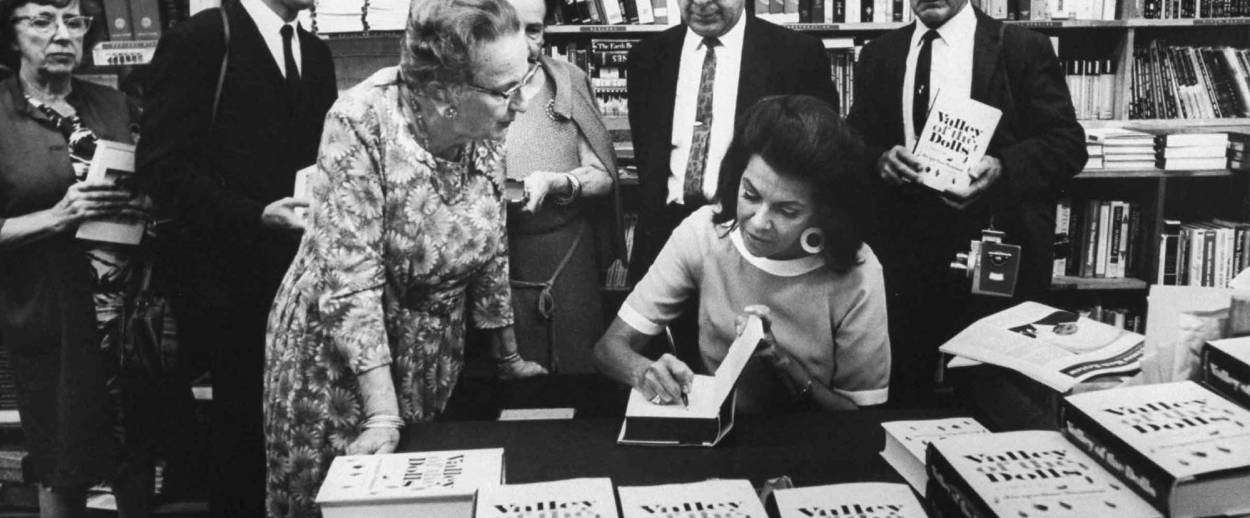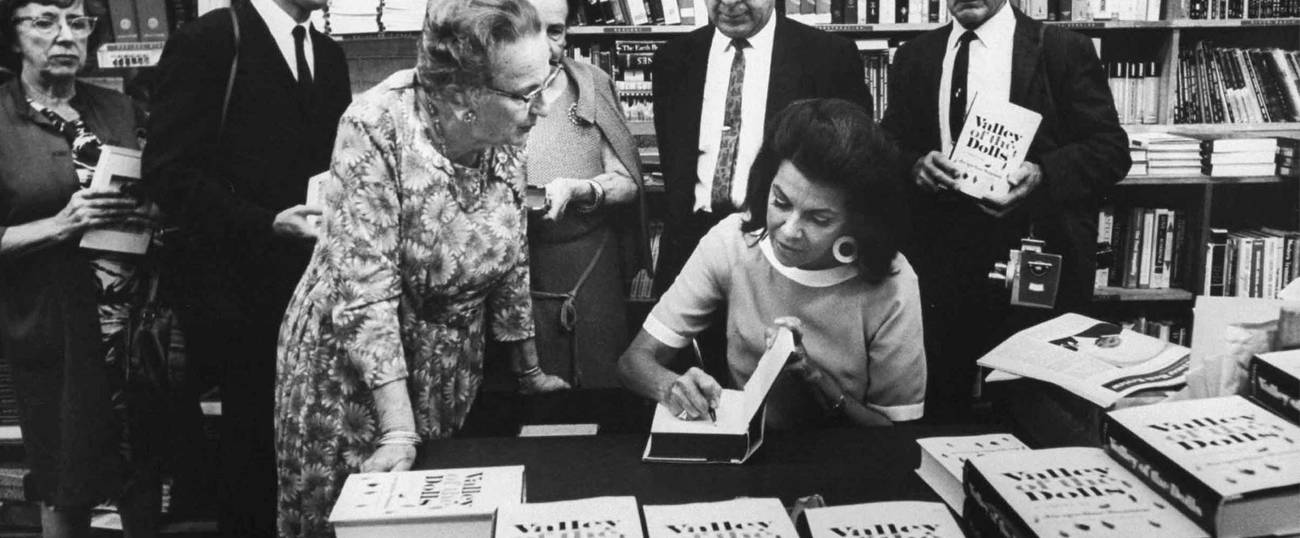In Praise of ‘Valley of the Dolls’
Bookworm: Sex, barbiturates, and the internal lives of women, in a flawlessly crafted and perfectly unstylish seminal work of American culture




In 1966, Jacqueline Susann’s Valley of the Dolls was published and became an instant bestseller, and eventually one of the bestselling novels of all time. And yet, despite the fact that this novel is no great literary masterpiece or even particularly well-written, it certainly doesn’t belong beside other schlocky global bestsellers, like The Da Vinci Code or The Bridges of Madison County. It has its own sort of authentic creative magnetism, and readers quickly get the sense—perhaps the same sense they got in 1966—that the thing before them is a seminal work of American culture.
The story, which takes place over two decades, follows three young women trying to thrive, and at times simply keep from drowning, in New York. It begins in 1945 with Anne, a young woman who wants to shake off her fusty New England roots, and begins a quick ascent into one of the highest New York social circles. She meets Neely, an unpolished teenager with a big voice, and Jennifer North, an actress running from a plebeian past who is forever unable to escape a middling career and celebrity status. Insomnia and depression and bad romances drive the three friends to barbiturates, which allow them to shed all worries and drift off into an artificial serenity that will eventually undo them. Anne begins an on-and-off relationship with her colleague, the dashing Lyon Burke, while Neely goes off to become a star and record albums before tumbling into Monroe-level tragedy.
If this book is taken as a sort of time-capsule historical looking glass, it touches on everything. Sex, drug use, family, imbalance in relationships between men and women, office culture, show business, and the internal lives of women at a time when, evidently, most men inexplicably seemed to believe such a thing could not possibly exist. And yet, while Valley of the Dolls is also often praised for addressing timeless or contemporary issues, both of these designations are wrong, or at the very least, totally immaterial to the reason this book has remained part of the American cultural canon for 52 years. I suspect that readers use these kinds of assessments for lack of a better explanation as to why a book, which is frequently dubbed chick lit, or even worse, complete trash, could feel so important.
The truth is that Valley of the Dolls is what happens when someone approaches writing as a craft rather than an art. And Jacqueline Susann was the consummate craftsperson.
As a proponent of occasionally dismissing certain classics and canonical works of literature as “bad,” I can’t do that in this case. Valley of The Dolls accomplishes every one of its goals. Just as it might be unfair to expect from Valley of the Dolls the kinds of things we get from Stendhal or Gogol, there is no greater disservice to Susann or her book than calling it trash.
While many writers struggle to build narratives or develop characters, Susann excelled at both. There is so little action in the first 250 pages and yet events are stitched together with such skill that the passage of time and events feels natural. And this can come only from a deep understanding of pacing and storytelling. Nothing feels forced or improbable. Everything happens for a reason and makes sense. This book really is no different than something like Mad Men: Seldom are we actually riveted by the events themselves, but we stick around because the creator understands that good storytelling is itself thoroughly entertaining and riveting, regardless of the story.
Susann also knew how to write characters that sounded and thought differently, in a way that reflects distinct personalities. Characters have accents and intonations distinct enough that their voices sound different in a reader’s head. At one point, Susann spends a page digging into Neely’s repeated use of the word geez. And by then it makes so much sense that Neely would use this word. Narration is all third-person, but as chapters switch perspective between the three women, the voice itself changes.
None of this is to say that Valley of the Dolls is a tremendous literary accomplishment. It isn’t. And that isn’t even the point. It is to fiction what Love Actually is to rom-coms. We do not fault these works for being less than high art. We love them for being exceedingly well done—for being masters of their own form rather than brainless vehicles that abuse the form, like Bridget Jones’s Baby.
As a nod to readers who might have been reading Valley of the Dolls for some other forms of enlightened stimulation, Susann also sneaked sex scenes into this book, which neither devolved into full-on pornography nor treated sex with a sort of cluelessness masking as tact, as so often happens in sex scenes written by men that use words like “member” or “wetness.” Here, we understand what is happening without feeling that someone is trying to make porn or maintain pseudo-propriety. This kind of balancing act permeates all aspects of this book and carries it to a place somewhere between low and high brow—a thing best described as midcult. I can’t imagine that Susann wanted to be either James Joyce or Danielle Steel. Her aim was balance. Susann wasn’t a master of prose, but she knew how to assemble a good sentence and write in a way that was compelling and readable without being terribly unique or elegant.
Valley of the Dolls is often compared to Erica Jong’s 1973 novel, Fear of Flying. And though it’s an unfair comparison because Jong’s book is actually a true work of literary fiction, the side-by-side highlights just the extent of Susann’s understanding of craft. Jong writes with style. She has a voice that carries not only the writing but the story itself. Fear of Flying owes almost everything to the writer’s style. But Valley of the Dolls tells a compelling story over 500 pages without once relying on the writer’s style. It relies instead on good storytelling and clear, lucid prose.
Style, ultimately, is the difference between art and midcult; craft is the difference between midcult and trash. And I will say this: Good midcult is always better than bad art. There is no higher accomplishment in the craft of writing than being able to really entertain and satisfy an audience without requiring sacrifice or cheapening their experience or, worse, cheapening them. Jacqueline Susann understood all this perhaps better than anyone else.
***
Read Alexander Aciman’s Bookworm column in Tablet magazine on Mondays.
Alexander Aciman is a writer living in New York. His work has appeared in, among other publications, The New York Times, Vox, The Wall Street Journal, and The New Republic.